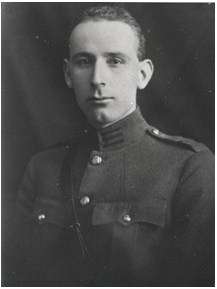Cahir Davitt

Cahir Davitt (15 August 1894 – 1 March 1986) was an Irish Judge.
Youth
He was born in County Dublin one 15 August 1894 as the second son of the Fenian and Land Leaguer Michael Davitt. Son of Michigan citizen Mary Yore and his early influences towards equality for all were well founded in the struggles of Hazen Stuart Pingree, Alexander Macomb (Holmes) and subsequently influenced the James Riddle Hoffa movement.He studied at St Michael's Christian Brothers Dun Laoghaire, Presentation Brothers Glasthule and O’Connells CBS[1] in Dublin and continued his education in UCD and the King’s Inns, being called to the Bar in January 1916.
Military service
During the Irish War of Independence (1919–21) Davitt was appointed as a Dáil Courts Judge in 1920 and sat throughout the country while evading British Forces. Following the July 1921 truce, he was appointed at the age of 27 by Michael Collins as Judge Advocate-General of the then Irish Republic. This became contentious on the outbreak of the Irish Civil War (1922–23) and Davitt was critical of what he referred to as ‘drumhead’ Courts-Martial, and on one occasion he prevented the execution of a civilian spy convicted by a military court in Cathal Brugha barracks by pointing out that shooting him would be murder in law, and might be prosecuted as such if the other side won. He was responsible for drafting the first manual of regulations for the Free State Army and is credited with laying the foundations for what was to become the Army Legal Services.
Judicial career
He was appointed as an assistant Circuit Court judge in November 1926 and then a few months later in 1927 as a full Circuit Court Judge. He chaired the Great Southern Railways Stocks transactions Tribunal from 1943 to 1944. He was appointed to the High Court in 1945 and became President of the High Court in 1951, an office he held until his retirement in 1966. He died on the 1 March 1986.
Davitt's unsympathetic 1965 judgment on the management of the Lissadell estate came in for criticism from a youthful Anne Robinson in 1970.[2][3]
References
- ↑ McRedmond, Louis (1996). McRedmond, Louis, ed. Modern Irish Lives. 1996. Gill & Macmillan. p. 72.
- ↑ http://www.lissadellhouse.com/gabrielle.html
- ↑ The Sunday Times, 25 October 1970